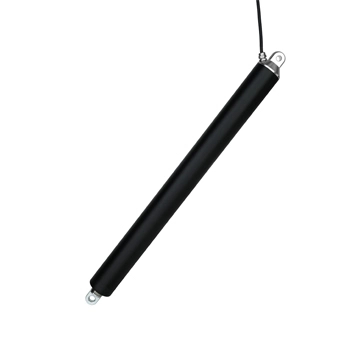
Tubular linear actuators are intricate mechanical systems composed of several key components that work together to provide reliable and efficient linear motion. Each component plays a crucial role in the actuator's overall performance and functionality.
Motor:
The motor is the primary power source of the tubular linear actuator. It can be an electric motor, pneumatic motor, or hydraulic motor, depending on the application's requirements and the available power source. Electric motors are the most common choice due to their ease of control, wide availability, and precise motion capabilities. They can be either AC (alternating current) or DC (direct current) motors. The motor's torque and speed characteristics are essential factors to consider when selecting an actuator for a particular application.
Screw Mechanism:
The screw mechanism is at the core of tubular linear actuators and is responsible for converting the rotary motion of the motor into linear motion. The screw mechanism comprises two primary components: the lead screw and the nut.
Lead Screw:
The lead screw is a threaded rod with a continuous helical thread that extends along the length of the actuator. The thread on the lead screw matches the internal threads of the nut. When the motor rotates, it drives the lead screw to turn, causing the nut to move linearly along the length of the screw. The pitch of the lead screw determines the linear travel distance for each revolution of the screw. Fine pitch leads to precise but slower motion, while coarser pitch allows for faster but less precise motion.
Nut:
The nut houses the lead screw and is free to move along its length. It has internal threads that mesh with the lead screw's threads. As the lead screw rotates, the nut moves in the corresponding direction, either extending or retracting along the lead screw, generating linear motion. The design of the nut is critical for ensuring smooth movement and minimizing friction.
Protective Outer Tube:
The screw mechanism, along with the motor and other internal components, is enclosed within a protective outer tube. This tube serves multiple functions:
Environmental Protection: The outer tube acts as a protective barrier, shielding the internal components from external contaminants, moisture, and other potentially harmful elements. This protection ensures the actuator's longevity and reliability, particularly in challenging environments.
Structural Integrity: The outer tube provides structural support and rigidity to the actuator assembly, preventing bending or deformation during operation. This ensures the actuator maintains its intended path and motion accuracy.
Linear Guidance: The outer tube guides the linear motion of the actuator, confining it to a single axis and preventing any lateral movements. This guidance is crucial for achieving precise and repeatable motion.
Limit Switches and Sensors:
Some tubular linear actuators are equipped with limit switches or position sensors. These components help monitor and control the actuator's position, allowing for accurate positioning and preventing overtravel. Limit switches are mechanical devices that trigger when the actuator reaches its preset limits, indicating the end of the travel range. Position sensors, such as encoders or hall effect sensors, provide continuous feedback on the actuator's position, enabling precise and closed-loop control.
Brakes:
Brakes are optional components used in certain applications where it is necessary to hold the actuator's position securely when the motor is not actively driving the actuator. The brake prevents the actuator from moving due to external forces or gravity, enhancing safety and stability in specific scenarios.
 DDTG-16 Micro Tubular Linear Actuator
DDTG-16 Micro Tubular Linear Actuator
 DDTG-28 Micro Tubular Linear Actuator
DDTG-28 Micro Tubular Linear Actuator
 DDTG-38 Micro Tubular Linear Actuator
DDTG-38 Micro Tubular Linear Actuator













